Mathnasium of Huntsville Awarded Top Three Tutoring Centers in Huntsville
This year, 2023, Mathnasium of Huntsville has been honored to be awarded among Huntsville's top 3 tutoring centers!
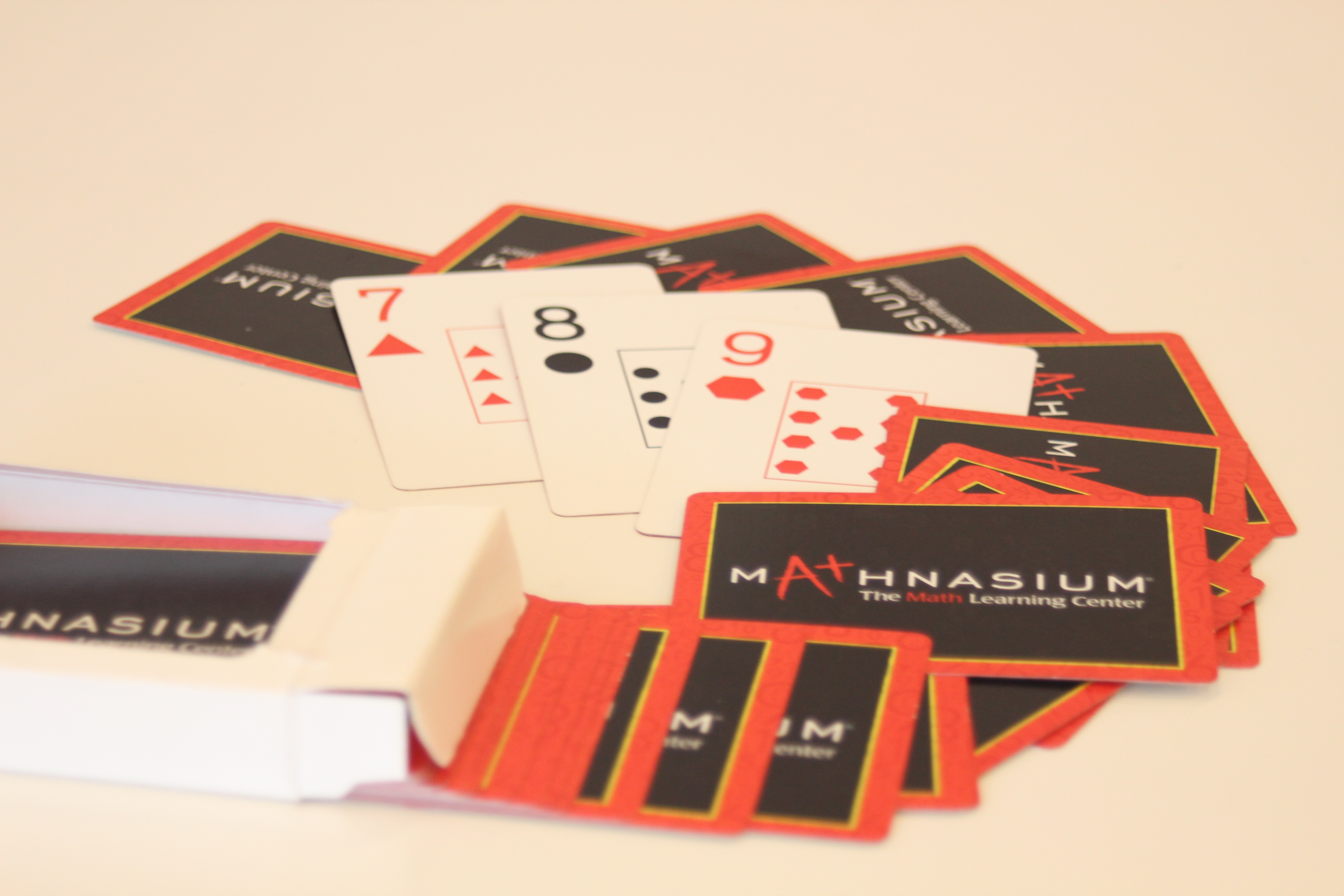
How many times have we heard kids say, “This is boooorrring”? One of the biggest challenges in teaching elementary students is keeping them engaged. Their young minds have not yet developed the attention skills we adults all-too-often expect of them. What does any good teacher do to overcome this difficulty? Make learning into a game!
At Mathnasium, we specialize in making math a fun experience for our kids. In this blog, we will share with you some of the things we enjoy using, so you can teach your kids math in a way that’s fun!
The easy thing about teaching kids math is that math is everywhere. Take advantage of that! Use an analog clock instead of a digital clock. Then, use the opportunity to teach kids how to count by fives! In the checkout line at the grocery store, use cash and have your child figure out how much change you will get back. You can even give them the extra change as a prize if they get it right!
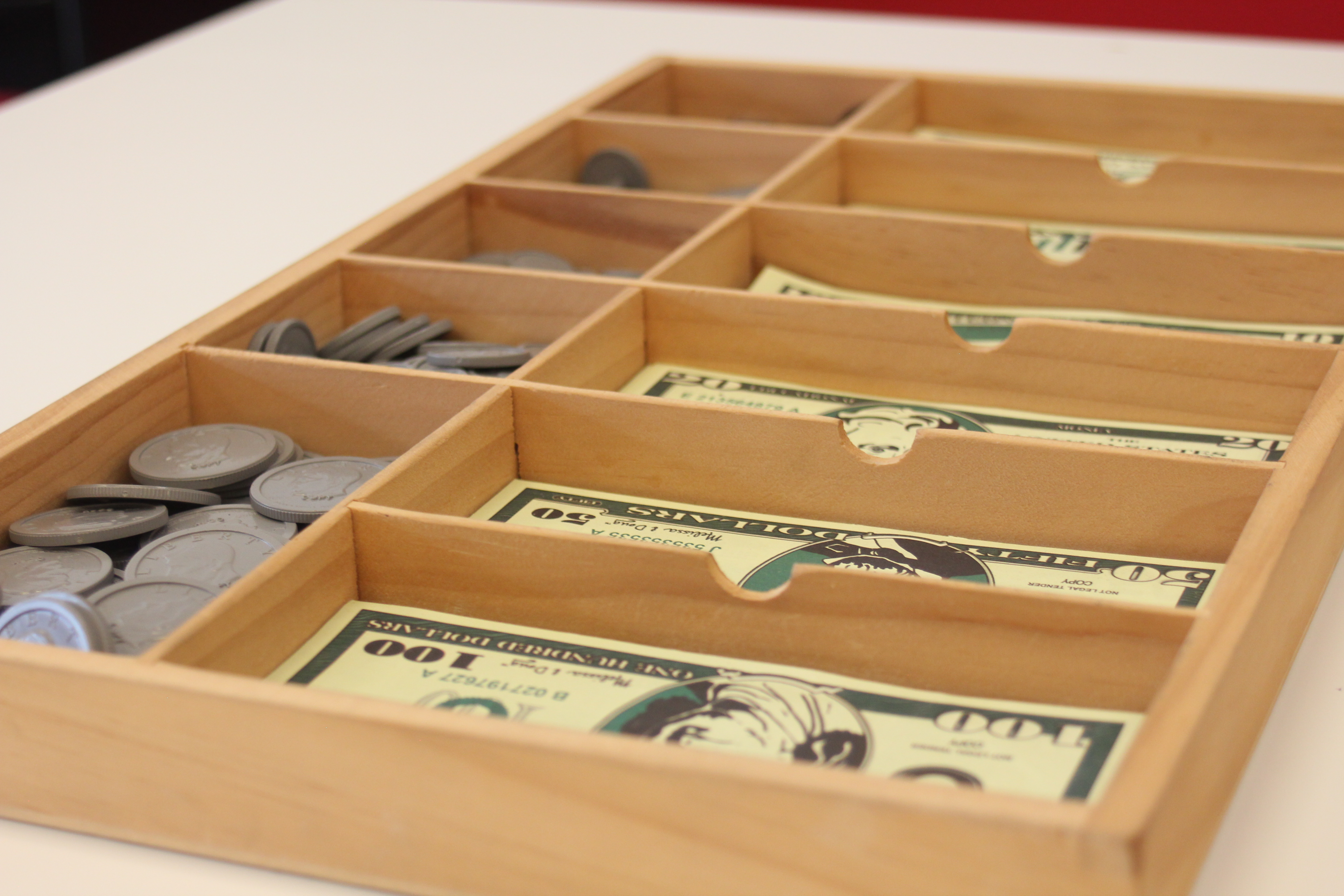
The moral of the story is, look for the math all around, and use that as an opportunity to teach kids. Math is practical, and showing that to kids while they are young can save a lot of pain down the road.
So now, without further ado, here are five fun ways for helping your kids learn math.
Addition
Cards can be very useful for building basic fluency with numbers 1-10. All you have to do is take out the face cards! If your child needs practice with single-digit addition (e.g., 7+8), use a deck of playing cards and flip two cards over. Have your child add the two numbers. You can make it more of a game by giving them 3-5 seconds to answer. If they answer in time, they get the cards. If they don't answer in time, you say the answer and take the cards. Whoever gets more cards wins!
War
If you’ve ever played the card game ‘War,’ you can easily shift it into a math game! In war, deal out all the cards equally among the players. Each player takes their pile, without looking at it, and flips over the top card. Usually whoever has the highest card wins and adds the faceup cards to the bottom of their deck. But, in ‘Math War,’ the first person to find the sum of the cards flipped up wins. So if Sam flips up an 8, and his mom flips up a 4, if Sam calls out “12!” before his mom does, he takes the 8 and 4 and adds them to the bottom of his deck. Repeat until someone ends up with all the cards. They win!
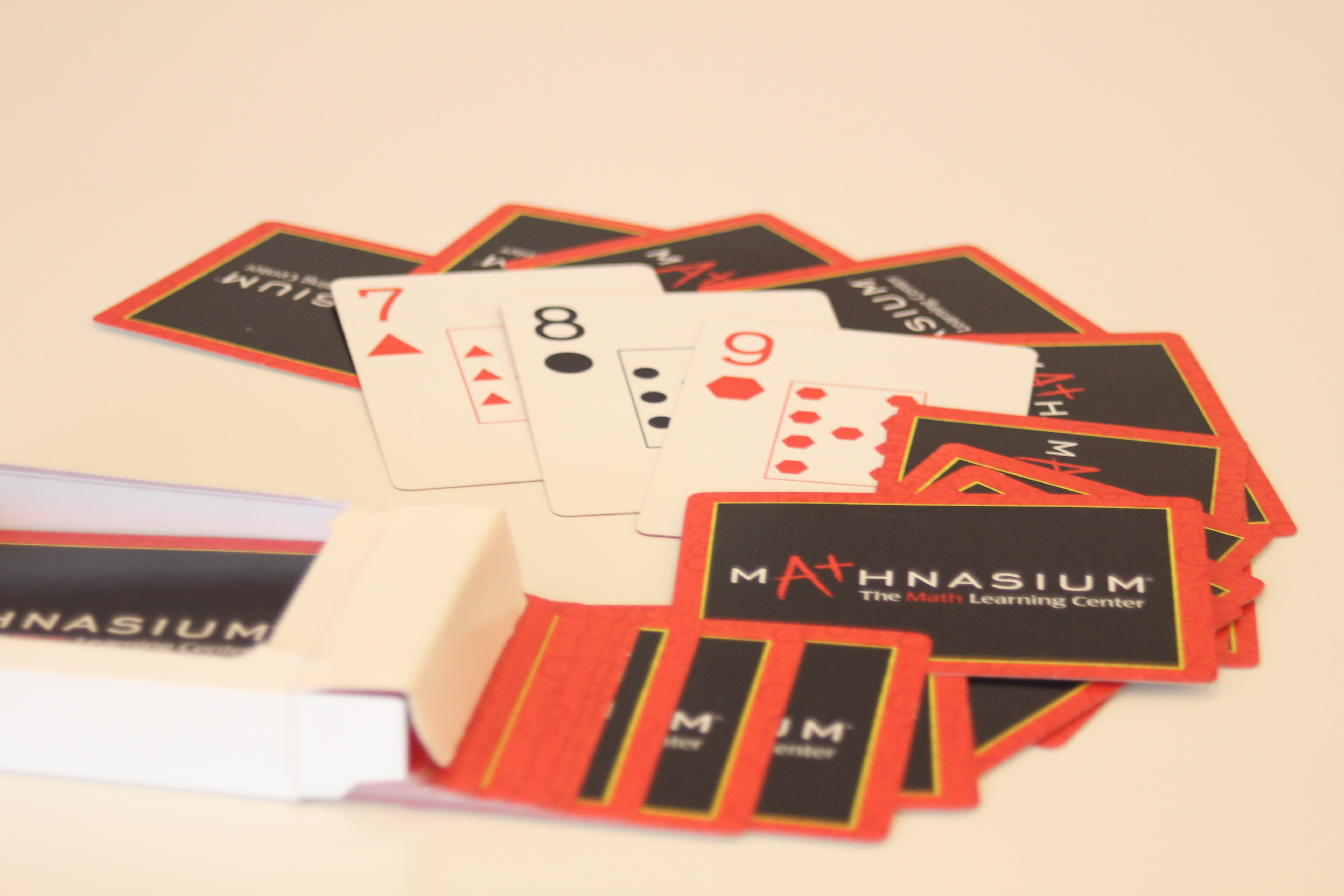
Multiplication
If your child needs practice on multiplication, you can play either game described above, except multiply the two cards instead of adding them. Multiplication is the #1 thing to practice or learn during the summer, whether your child just finished 2nd grade or is about to start 7th.
*Note: if you want to practice multiplication or addition with 1-12 instead of 1-10, you can leave in Jacks to act as 11’s and Queens to act as 12’s.
Also, if you notice your child is struggling with one number especially, it can really help to drill them on that number in particular!
Subtraction and Division
Once your child can whizz through the addition or multiplication, you can change it to subtraction or division respectively. Simply flip one card over and hold the other card in your hand. For example, say you flip over a 5, and hold a 7 in your hand. You would ask, "5 plus what equals 12?" or "5 times what equals 35?" When they give you an answer, show them the card to see if they got it right! This technique is especially helpful because it shows the kids the similarities between addition and subtraction or between multiplication and division.
I love origami and I share that passion wherever I can, including with my students. Origami helps build the same mental logic skills that are needed for math. If your child tends to enjoy arts and crafts more than math, origami can help them do what they love while building math skills!
Origami practices visualizing the next step, understanding basic geometry of lines and shapes, and conceptualizing parts versus the whole. All of these are basic math skills!
Origami is also great because it can be challenging and fun no matter how old you are. There is origami for all difficulty levels! You can get origami paper at a local craft store, or find instructions to make regular paper into a square (most origami starts with a square sheet of paper).
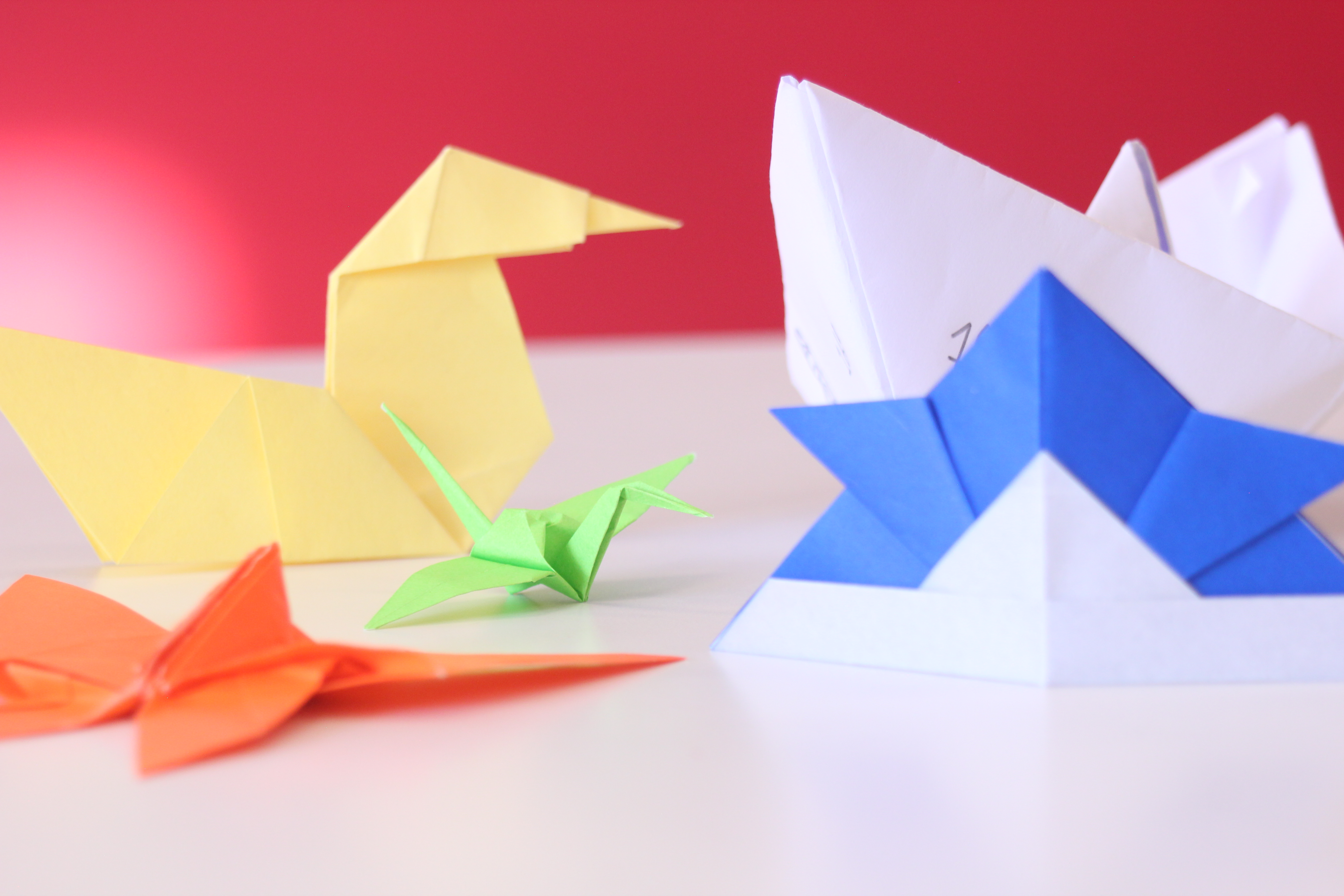
You can find origami instructions by looking online or getting a book from the library. YouTube has endless videos on how to do countless origami models! I also recommend the Origami Resource Center. In addition to having diagrams of origami models for free to download and share, the Origami Resource Center has explanations of the different types of folds and bases involved in origami!
Happy folding!
Kids these days do seem to love spending time on their phone! Fortunately, there are many apps that seek to combine learning into the fun.
U. S. Army Stars Elements is an app developed right here in Huntsville over on the arsenal! In this game, kids learn about elements and the periodic table by building their own atoms, seeing how atoms combine with other atoms, and answering trivia questions! The graphics are fascinating and exciting! You can watch our full video about the game here.
Math Riddles is an app created by Black Games that has seemingly endless challenging levels of math puzzles. Advanced students that need a challenge will particularly enjoy this game. The puzzles begin easily enough, but quickly become challenges that stretch the player’s logic and creative intelligence. Logic skills are fundamental to math, so this game could be just the ticket to take math skills the extra mile!
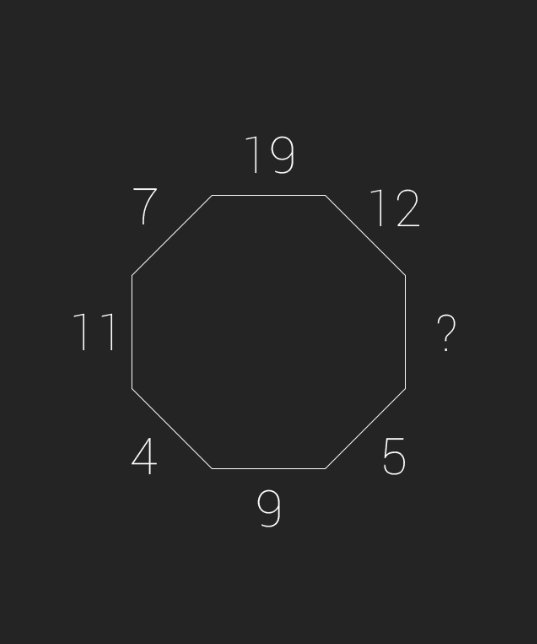
One thing I really like about this app is the originality put into the puzzles. Players must look for patterns, contemplate the relationships between the numbers, and interpret how the visuals are showing corresponding parts of the puzzle.
You can find out more and download the app by going to Black Games’ website.
Math the Cross Math Puzzle This app from GreatBoy Studio is better geared toward children that need practice with basic numerical fluency (adding, subtracting, multiplying, and dividing, the four basic operations). On the main screen, select which of those four operations you would like in the puzzle, select the desired difficulty level, and hit play. A puzzle pops up that looks like a crossword puzzle, except it’s full of number sentences! The player must drag and drop the numbers to the correct spaces. Finish quickly to beat the high score! There is also an arcade mode where players advance to harder levels.
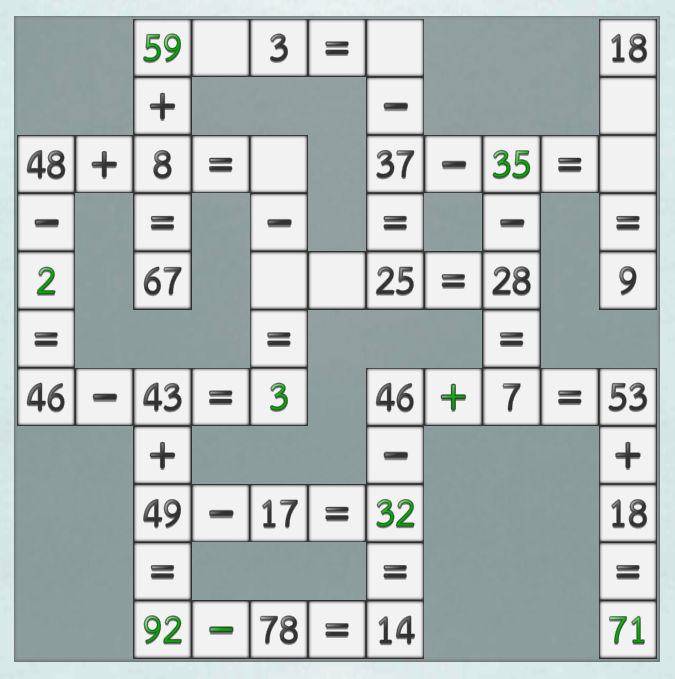
This game is really good for several reasons. For one thing, you are in control of how difficult the game is; so, this game can help at every grade level. It was even fun for me to play! Another great thing is that it drills the basic operations. All too often, the reason kids struggle so much with more complex math is because they take too long to stop and think about a basic operation. For example, adding and subtracting fractions is so painful for many students because taking too long multiplying to get an equivalent fraction causes them to forget where they were at in the problem. The same could be said of many kinds of problems!
As you can tell from the name of this app, the English is not completely correct. However, it’s a simple game to grasp, so the grammar errors do not detract much in my opinion! Click here to get it on the app store, or here to get it on Google Play.
Fractions. Kids either love ‘em or hate ‘em! Here are some ways to make them more fun:
Draw It Out
The biggest problem kids typically have with fractions is getting lost in abstract methodologies. Kids that are 10-12 years old have not yet developed the ability to do abstract reasoning, so when I teach kids about fractions, I try to keep it simple and concrete. The best way to do that is to show what’s going on with the fractions by drawing it out. What is ½ + ⅓ ? Instead of starting this type of math by explaining least common multiples, equivalent fractions, and common denominators, just draw a circle! Have your child cut the circle in half with one color and then cut it in thirds in another color. After that, have them shade in ½ and ⅓. Then help them figure out that halves and thirds together make sixths, so the new amount shaded in is ⅚.
This is just one example of how drawing the problem out makes fractions much more digestible. And it’s a lot more fun! The kids get to use colored pencils and can see the concepts in action.
Use Real Things
A fun way to learn fractions is by using pizza. I don’t have actual pizza when I teach my students at Mathnasium, but I often use pizza, donuts, and cupcakes in my examples. Again, that makes things concrete for the kids. Questions that stump them suddenly become easy when you replace the numbers with tangible items.
This happens at our Mathnasium all the time:
Me: “What’s half of 5?” Student: “You can’t take half of 5 - it’s an odd number!” Me: “Well, what if we have 5 cupcakes that the two of us are trying to split? How much would we each get?” Student: “We would each get 2 and then there would be 1 left over.” Me: “So what should we do with the cupcake left over?” Student: “Cut it half?” Me: “Exactly! Now how many cupcakes do you get?” Student: “2 and a half.”
After they understand the big picture in a concrete way, kids can start answering building fluency and working on questions without depending on cupcakes. ; )
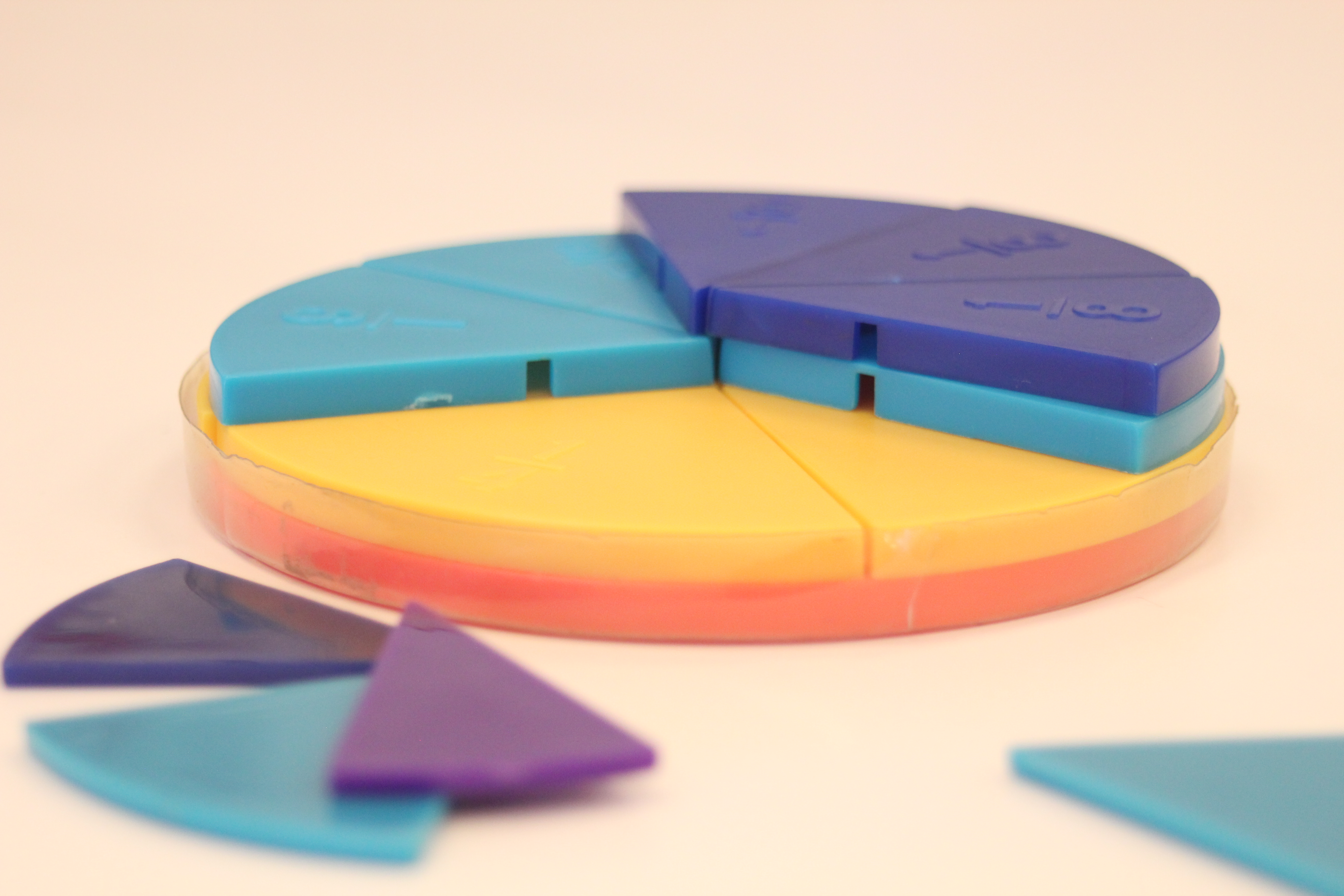
Have a Piece-a Pizza
Pizzas are fractions. You can use pizzas for absolute basics, like learning how to write fractions. For example, cut a pizza into 4 pieces and each piece is ¼ of the pizza. How much pizza is left if we munch munch munch eat one of the slices? One, two, three fourths.
You could also use pizza to demonstrate equivalent fractions. For example, say we have ½ of a pizza with pepperoni and ½ with just cheese. If we cut the pizza into 8 pieces, then 4/8 of the pizza is pepperoni and 4/8 is cheese. You could also start with thirds or fourths and cut the pieces from there.
Add and subtract pizza slices to practice adding and subtracting fractions. You can even introduce multiplying and dividing fractions! Six eighths of the pizza divided among three people is 2/8 apiece.
We have fun here at mathnasium! Many a child that hated math came to enjoy it here. Every math page they complete earns them a star, and when they get enough stars to fill out their star card, they get to spin the wheel and get points! Kids can choose to spend their points on a small prize or save up to get a bigger prize. And we don’t give cheap arcade prizes either. A really dedicated student could walk out with an electric guitar!
Kids learn the value of saving and working hard, and get some cool stuff along the way.
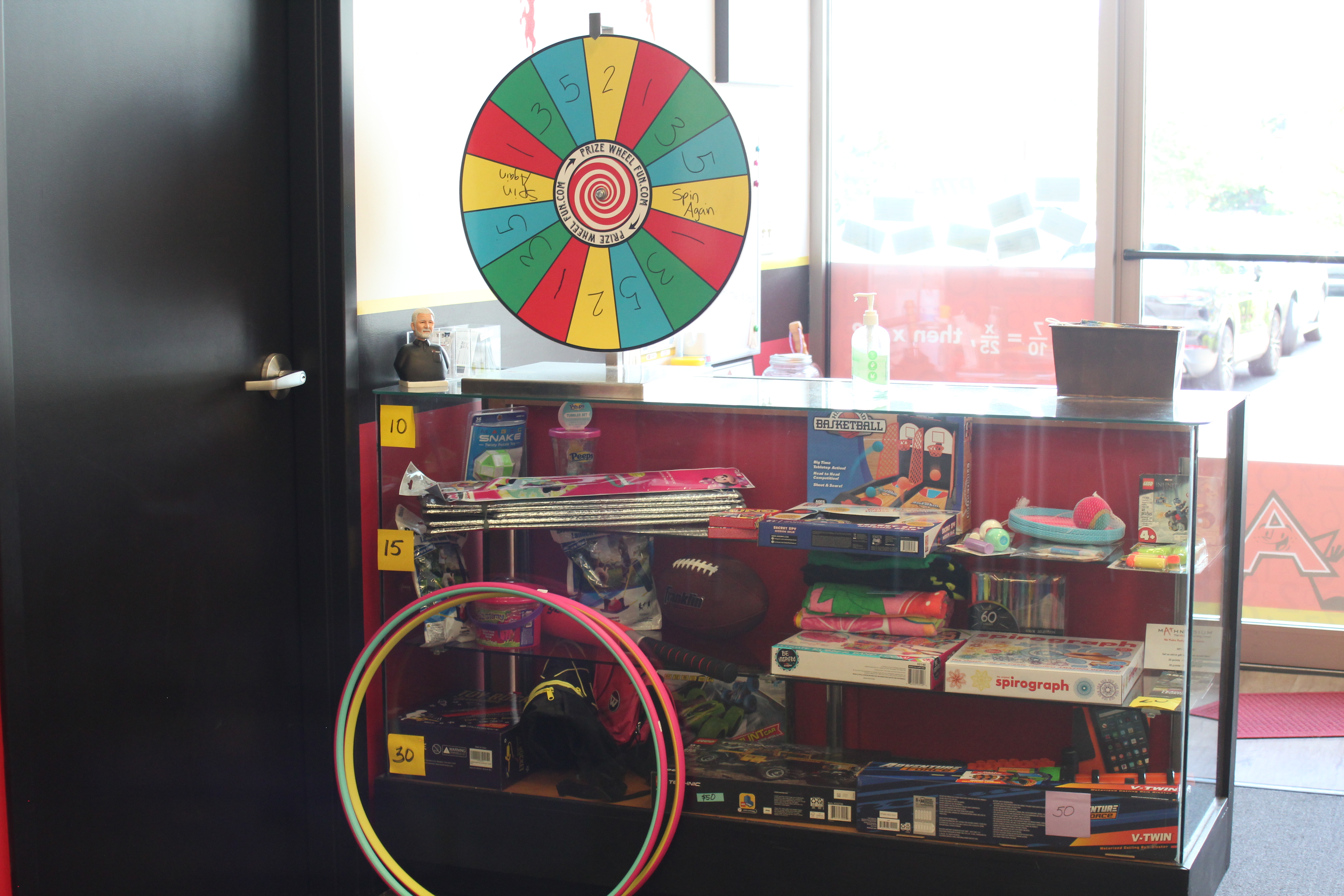
In addition to the prize system, we Mathnasium instructors help kids learn to love math by playing math games with them, encouraging them when they're struggling, and praising them when they do well. Our customized learning plans are based on an evaluation that determines exactly what the student needs to be working on. That way, kids that are advanced get challenged and kids that are behind get caught up. This system can especially help kids that are demoralized about their math skills. Our Mathnasium curriculum introduces topics in ways that make sense and work easily.
To learn more and reach out to us, please visit our website; call us, 256-885-0886; or shoot us an email, [email protected]. We are happy to help in any way we can!
